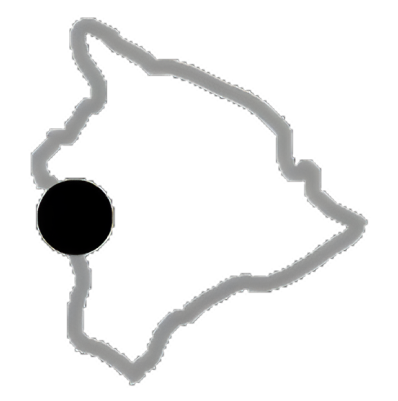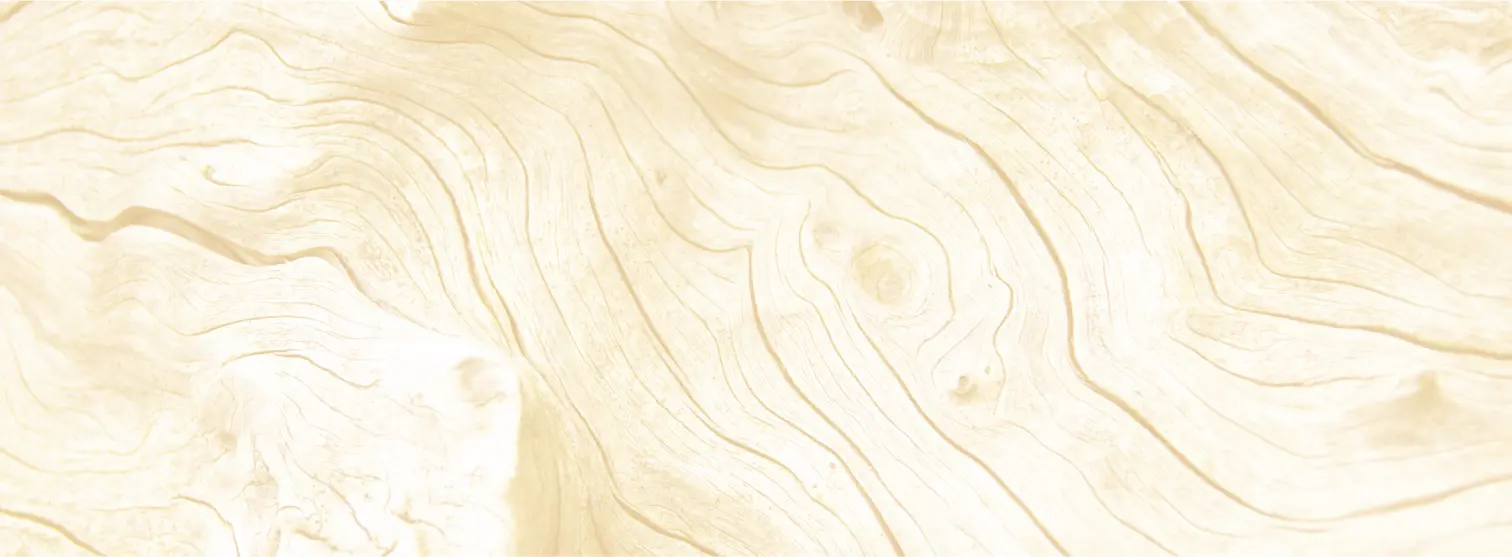Once Hawaii was for the birds. Before the arrival of humans, it was birds, not mammals, which dominated the environment. Today Hawaii’s native forest birds are disappearing. Nearly half of the 140 bird species that were known from historic times are extinct and over 50 additional extinctions have been identified from fossil evidence. Of the species we have left, 31 are on the U.S. Endangered Species List. Some of the world’s rarest species of birds are Hawaiian. Maui’s endangered Po’ouli, one of the Hawaiian honeycreepers, has an estimated population of 5 or 6 birds. Here on Hawaii Island, the embattled Alala or Hawaiian Crow has a wild population of around a dozen individuals. Though not as rare as these, the dazzling scarlet honeycreeper Iiwi, perhaps best represents the beauty, evolutionary wonder, and endangered status of Hawaii’s birds.
The Iiwi is visually stunning. The adult birds have a brilliant red body and black wings with a white patch. With the reddest of red and blackest of black, they stand out brilliantly in the infinite shades of rainforest green. Their colorful plumage was used in Hawaiian featherwork, including Kamehameha’s famous cloak. Even when in the rare, thick, native forest where the Iiwi flits about in high densities, I never tire of watching this handsome creature.
Its vocal repertoire is world-class. Once in Iiwi habitat, you will hear the bird before you see it. Emanating from the nearly six inch tall feathered songster is a surprising diversity of rusty squeaks, sharp whistles, and gurgly songs that end with a two note horn-like “beep-beep.” Along with its own original score, the Iiwi is a fine mimic of the other forest singers. The Iiwi is gregarious and the dominant noisemaker. Their continuous daylong vocalizations combined with the other birdsong make the forest sound like a symphony orchestra beginning to tune up.
Despite its beautiful color, the bird’s most striking feature is its beak. Long, curved, and salmon-colored, the Iiwi’s bill is a nectar gathering, insect probing, evolutionary masterpiece. The Iiwi and the rest of its bird cousins, the Drepanidinae or honeycreepers, evolved from a single finch-like ancestor long ago. From this genetic colonizer, sixty to seventy species arose. Many of them acquired very specialized feeding niches. This speciation, known as adaptive radiation, is most evident in the bill design. There are thick, pliers-like, stout bills for seed eating. The insect eaters have skinny, probing, long and short bills. Some developed cross-bills for prying bugs off and out of leaves. Others evolved strong prying and pecking beaks to excavate insects out of shallow bark and bore holes. The nectar gatherers, like the Iiwi, have bills that are curved to fit in the deep recesses of flowers, some fit perfectly into the native Hawaiian blossoms. This type of evolutionary bird specialization, though not unique to Hawaii, is unsurpassed. The Hawaiian honeycreepers are arguably the world’s best example of adaptive radiation in the bird kingdom.
Not only are the honeycreepers one of nature’s great evolutionary treasures, they are also one of world’s most endangered family of birds. Unfortunately, the same geographic and genetic conditions that set the stage for Hawaii’s remarkable evolution also left them with poor defensive and competitive survival skills. Once humans discovered and colonized the islands, a process of deforestation and alien species introductions dramatically transformed the islands’ ecosystems. By some estimates the islands have lost 70 to 90 percent of its native forests. Along with this loss of habitat, the presence of foreign plants and animals negatively impact the Hawaiian species. Predators, such as cats, rats, and mongoose that were intentionally or accidentally introduced, find the Hawaiian birds easy prey. Exotic birds, once established, are serious competitors for food resource and breeding territory with the native residents. Native Hawaiian species are being assaulted from many directions. Scientists believe that the current population crashes recorded are the result of a complex triangle of pigs, mosquitoes, and epizootic organisms-bird disease.
When I moved to Hawaii nearly eight years ago, Iiwi were readily found at the Thurston lava tube in Hawaii Volcanoes National Park. Today they are not found anywhere around the Crater Rim drive except on rare occasions. On Molokai, the National Biological Service’s forest bird survey in 1995 recorded only one Iiwi on the entire island. There are believed to be less than a dozen surviving on O’ahu. The Iiwi are dying from disease spread by mosquitoes. Pigs rooting in the forest and eating out the starchy cores of tree ferns create stagnant pools of water. These pools serve as breeding habitat for introduced mosquitoes. These mosquitoes bite exotic birds, some of which have bird disease in their blood. The mosquitoes then bite the native birds that have little or no defenses against these foreign microbes. Once infected the Iiwi has shown a mortality rate of 100 percent in some studies. Carter Atkinson, a researcher from Volcano, has shown a direct correlation between the amount of pigs in the forest and the level of disease in the bird population—more pigs, more mosquitoes, more disease.
It is startling to look back through the historic record and its collection of recent extinctions. It is disheartening to listen to biologists lament this decline, or to read the studies and research that document the numbers. But it is deeply affecting to witness the decline through your own binoculars. In my short time in Hawaii, I have seen the loss. Biologist Jack Jeffrey of Hakalau National Wildlife Refuge, calls the Iiwi “the essence of honeycreeperness.” With its splendid beauty and vivid evolutionary adaptations it certainly lives up to that moniker. I only hope it doesn’t join that long and growing list of extinct honeycreepers. The birds need intact, native forest habitat to survive. Strategies to deal with the exotic species along with forest protection and restoration hold hope for our forest mar


